Recover Tactical is primarily known for their CC3H “grip and rail adapter” retrofit for 1911s pistols, as well as their BC2 grip system for the Beretta 92 series of pistols. These low-cost, full-frame grip covers create picatinny rail space for pistols that otherwise lack that feature. These grips have been well received by the shooting public, and were recently picked up by retail giant Cabela’s and others. Recover Tactical recently released a holster that is intended to work with the CC3H, and they sent TTAG some T&E samples of their products for review . . .
To recap the basics, if you have an old 1911 or Beretta 92 and you need a low-cost option for adding picatinny rail space for lights or a laser, Recover Tactical has just the ticket.
The CC3H/BC2 grip system is a “clamshell” design sheath that covers most of the frame and creates a picatinny interface on the underside of the dust cover, thereby enabling the user to add a flashlight and/or laser. The CC3H/BC2 grips were designed by Israeli weapons engineer and industrial designer Tamir Porat, who is perhaps best known as one of the designers of the Tavor rifle used by the Israeli Defense Forces. Recover grips and holster are made in Israel.
Currently, two models are offered – the CC3H fits any standard sized model of 1911 pistol, and the BC2 fits the Beretta 92. Here’s the CC3H:
Similarly, here’s a Beretta 92FS fitted with the Recover BC2:
The Recover CC3H/BC2 grip and rail adapter is made of high-grade glass reinforced polymer composite, which is the same type of material used to make GLOCK frames and similar gun parts. All manufacturers use, more or less, the same materials, but vary the amount of the glass in order to either stiffen the material or make it more flexible.
The Recover CC3H was designed to fit on any standard model 1911 pistol with barrel length of 4.25 inches or longer. Occasionally, a gun may be out of spec, which will cause fit issues. For example, roughly 10% of the Rock Island Armory GI 1911s and Taurus PT1911 models have fit issues, according to the manufacturer. More specific information on fit issues can be found here.
I don’t own a 1911 that would fit the CC3H, so a buddy of mine generously allowed me to borrow his Springfield Armory 1911. Installation was easy, and the allen wrench needed to complete the task is included with the grips. As it turns out, the Springfield’s frame was just a smidge out of spec, which caused the CC3 not to fit perfectly in one location. I didn’t worry about it too much, because it still worked from a functional standpoint. I could have easily fixed the fit issue by shaving away some material from the CCH3 grip with a Dremel tool. I didn’t actually bother, because the Springfield will probably not be the host gun in the long term.
My buddy Chase Francis at Buster Beaver Designs in Wilsonville has been selling entry level Remington 1911s upgraded with the Recover CC3 grip and custom Cerakote finishes. Chase tells me that the CC3H grips are a perfect fit on these guns, and the two samples I inspected seemed to confirm this conclusion.
Also, I had better luck getting the BC2 to fit my Beretta 92FS. Apparently, Recover Tactical found out that not all Beretta 92 frames are a consistent size. They redesigned the BC2 to remedy fit issues, and the updated version BC2 fit my USA-made Beretta 92 FS very well.
In either case, installation was pretty simple and took less than 10 minutes to complete. The CC3 / BC2 grips interface with the frame using the 4 grip screws found on both the 1911 and the 92F. The front of the grip is held in place with two allen screw / nut combos that are located near and in front of the trigger guard. Recover Tactical provides the required allen wrench needed to complete the install.
Of course, the big question with grips of this sort is “how are the ergonomics”? There is no getting around the fact that grips of this type do tend to add to the girth of the pistol grip, and the Recover grips are no exception. Fortunately, the designers of the CC3H /BC2 grips kept this to a minimum. While the increase in girth is noticeable, it does not result in a grip width that is so big that it interferes with the ability to maintain a good shooting stance. While shooters with very small hands may have some reason to be concerned, most shooters will be able to use the CC3H / BC2 grips without any problems. Guys with big hands may actually prefer the increased girth. My buddy “Big D” (shown above) has some big mitts, and yet he didn’t have any problem hitting steel with the Recover BC2 grips on my Beretta.
I noticed that with the Beretta, the BC2 grip molds over the trigger guard and makes the opening slightly smaller than it otherwise would be (See photo above). Depending on how low your finger rides on the trigger blade, your finger may drag across the BC2 grip just slightly. Some shooters will find this objectionable, but most shooters won’t notice it at all. I think I may use my Dremel tool to “customize” (read: bubba) the grip a bit. Interestingly, the CCH3 grip is designed differently and does not create any rubbing issues.
Another difference between the CCH3 grips and the BC2 grips concerns the way they interface with the mag release button. The CCH3 is heavily scalloped out in the vicinity of the mag release, which makes it easy to get to. For some reason, the BC2 is not scalloped out in the same fashion, which is a bit disappointing. Looking at the design, I suspect that the additional reinforcing in the Beretta Grip is intended to compensate for the weakness created by the gap created by the slide take down lever.
HC11 Holster
Any grip that enlarges the girth of a pistol will cause holster fit issues. Recover Tactical astutely recognized that reality and did something about it by designing the HC11 holster. The HC11 holster is an inexpensive but effective way to carry 1911 pistols equipped with the CC3H 1911 grips. Beretta compatible holsters are on the design board, but are not ready just yet.
Looking at the design, you really appreciate how the holster is intended to work with a variety of different sized rail attachments. Unlike my Kydex holsters, I can attach my Streamlight TLR-1 HR one day, and my Viridian laser the next day. The secret to the holster’s retention system is the flap hinges. These flap hinges are made out of a very flexible synthetic rubber compound that is chemically fused to the holster. While the exact method for accomplishing the fusion is proprietary, it is not accomplished using glue or adhesive. Rather, the technology relies on a combination of high pressure and heat to “melt” the two different materials together. What you don’t see from the photos is that there are also “tracks” made into the holster which I am hold are similar to dovetail with holes in it, which help with the fusion process.
The holster has a ratchet wheel that is fully adjustable for cant; the locking wheel is adjustable by hex key and takes less than a minute to adjust.
The HC11 holster comes in two styles, retention and no retention. For my T&E sample, I chose a retention holster, in part because I didn’t own any similar holsters and I wanted to train with one. After all, part of the fun of being a gun writer is having access of new products to familiarize and train with.
These days, you hear a lot of gun gurus who disapprove of retention holsters – particularly those that require the operator to use his or her trigger finger to depress the release. The concern is that the trigger finger can accidentally engage the trigger as the pistol is released from the holster. Recover Tactical has considered this potential problem in the design of the HC11, and the detent is located so that your finger indexes high (i.e. with the slide, not the trigger).
Overall, I found the HC11 holster to be very functionable and serviceable. I initially thought that the paddle seemed a bit too flexible, but I never had any problems from a functional standpoint. In fact, it worked a lot better than I thought it would. Nonetheless, Recover must have seen the same thing I did because they have since decided to stiffen the paddle a bit, which I think was the right call.
My only real complaint is that the drawstroke and reholstering of the HC11 holster is a bit loud, which is the same complaint I have with Kydex holsters. Like Kydex, these holsters would not work well in a noise sensitive environment unless the shooter takes considerable effort to effectuate a slow and purposeful draw.
One really cool thing about Recover is that they stand behind their products. The CC3H holster comes with a 3-year warranty and the grips have a lifetime warranty. As it stands, the HC11 holster will only work with the upgraded CC3H grips; it will not work with their older CC3 grips. Nonetheless, if you already own the original CC3 grip and rail system, Recover Tactical currently offers a free exchange program whereby they will send you an set of upgraded CC3H grips if you purchase the HC11 holster. All you have to do is send in your old CC3 grips and they will send you out a replacement set of CC3Hs.
http://www.recovertactical.com/shop/holsters/recover-hc11-holster-for-1911
Another bonus, the HC 11 holster is compatible with the excellent IMI Holsters accessories, so you can use their drop leg, belt adapter, or even the IMI paddle if you prefer:
One final point… If you are interested in trying out a “stippling” project, the Recover grips may be a cheap option for testing out your skills, as opposed to using your GLOCK as a guinea pig. Obviously, the three pics that follow show work from experienced craftsman, but I gotta say, they look pretty rad:
If you’re budget conscious and you need to add a light and/or laser to your 1911 or Beretta 92, Recover Tactical has a well-thought-out solution that will serve your needs. Of course, there will be the detractors who will ask “why not just buy a new gun with built-in rails?” The obvious response is: Yes, if you got the cash, buy a new gun. But if you don’t (or you would rather spend your hard earned bucks on your wife or girlfriend (or both), then Recover Tactical offers a viable solution to a commonly-encountered problem. And now that Recover has released a solid holster to support their system, one of the primary reasons for not getting this system is taken off the table. Personally, I’m looking forward to what else that Recover Tactical can come up with. Maybe a rail adapter for my 23-year-old Gen 2 GLOCK? Stay tuned.
Specifications: (CC3H / BC2 Grips):
Available Colors: Black, Olive Drab & Desert Sand
Weight: ~65 grams.
Rail Length: 4.5 cm
Price: CC3H / BC2 Grip System retails for $49
Warranty: Lifetime.
Ratings for the CC3H /BC2 Grips (out of five stars):
Ease of Installation * * * *
Just as easy as installing standard 1911 grips, except you need to also install two cross bolts.
Build Quality * * * * *
Much improvement in quality as compared to earlier T&E samples reviewed by TTAG.
Functionality * * * *
Not the most sexy looking thing in the world, but it works and that’s all that really matters.
Overall * * * *
Solid solution for the cost conscious shooter.
Specifications: (HC11 Holster)
Available Colors: Black, Olive Drab & Desert Sand
Price: HC11 Holster: $59
Flexibility: Patent pending Frame Locking System with universal railed accessories.
Compatibility: Currently available for standard size 1911s that use a Recover CC3H grip and rail system.
Retention: Active or Passive Lock.
Options: right-hand or left-hand draw.
Warranty: 36 Months Free Exchange with proof of purchase
Ratings for the HC11 Holster (out of five stars):
Build Quality: * * * *
Seems to have held up well after 6 months of use. The light I used gouged the plastic a big, but this appears to be just cosmetic.
Design: * * * *
Overall, I think the design is sound, especially now that the paddle has been reinforced.
Comfort: * * * *
I had never used a paddle design before so I didn’t know what to expect. The gun stayed in place very nicely, and I could take the holster on and off without undoing my belt, which is nice.
Concealability *
This holster works for duty use or for range/field use, but it is not a concealment holster.
Overall: * * * *
Solid effort. Again, if you have already decided that the Recover Tactical grip system will serve your needs, the holster is a worthwhile and cost effective addition.

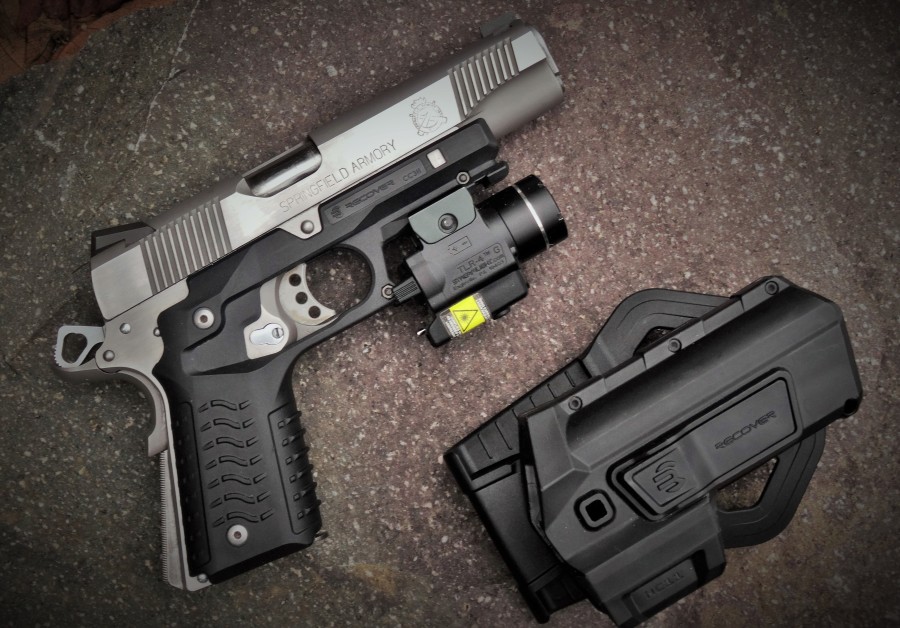
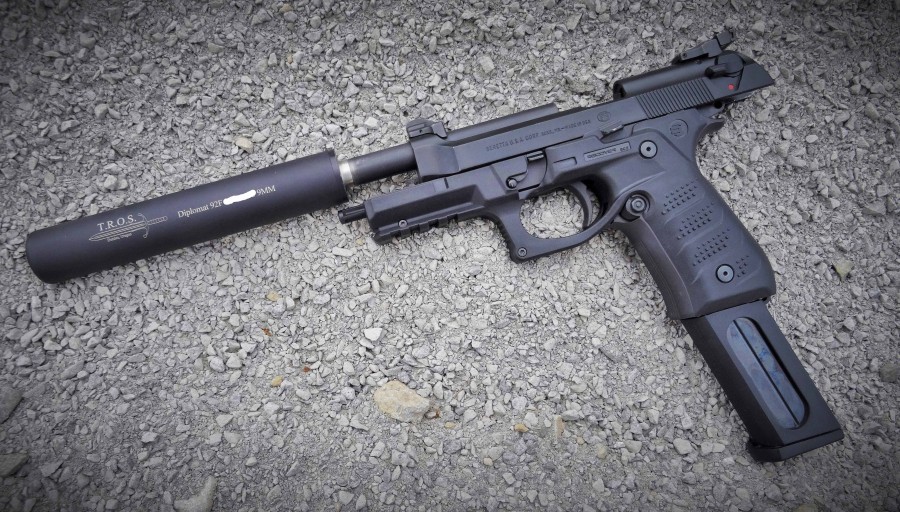

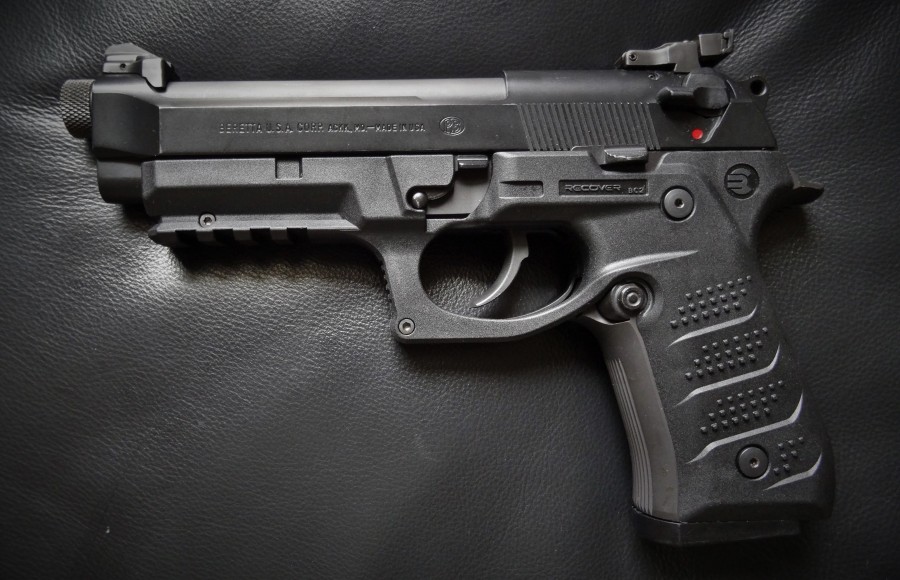
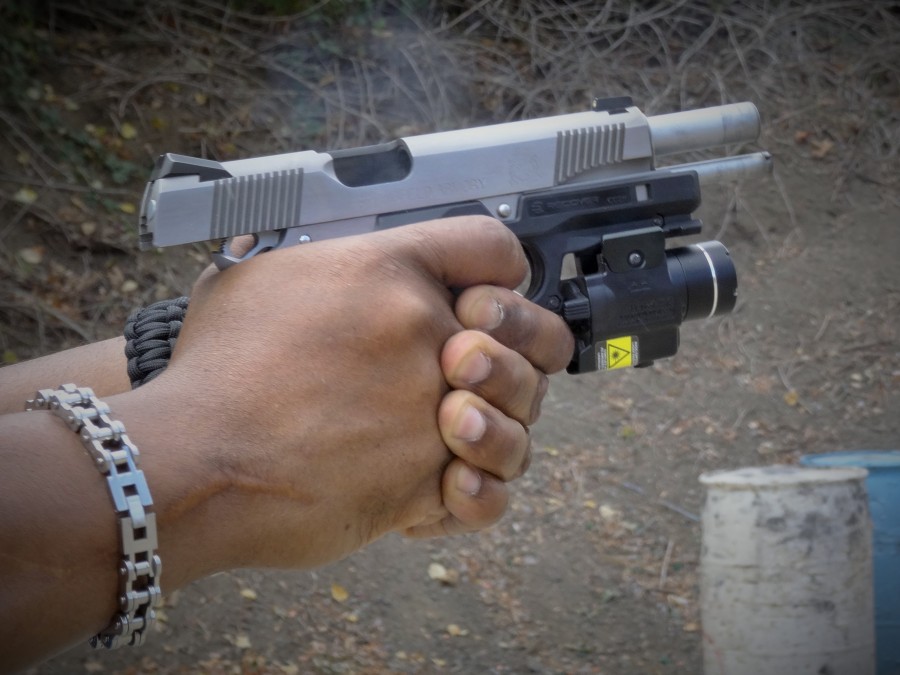

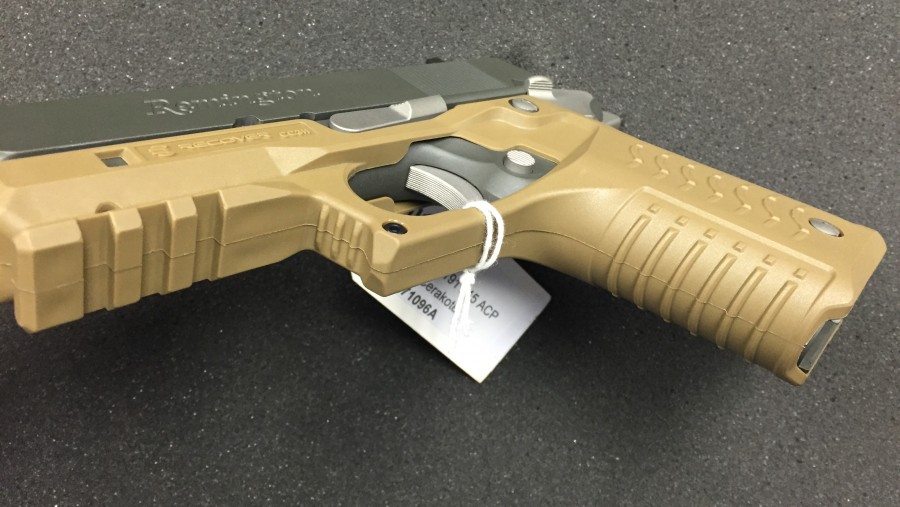
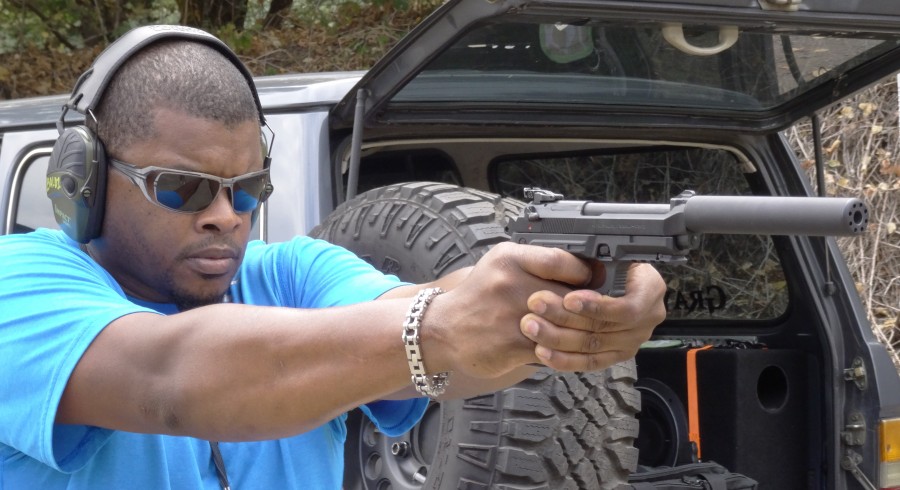

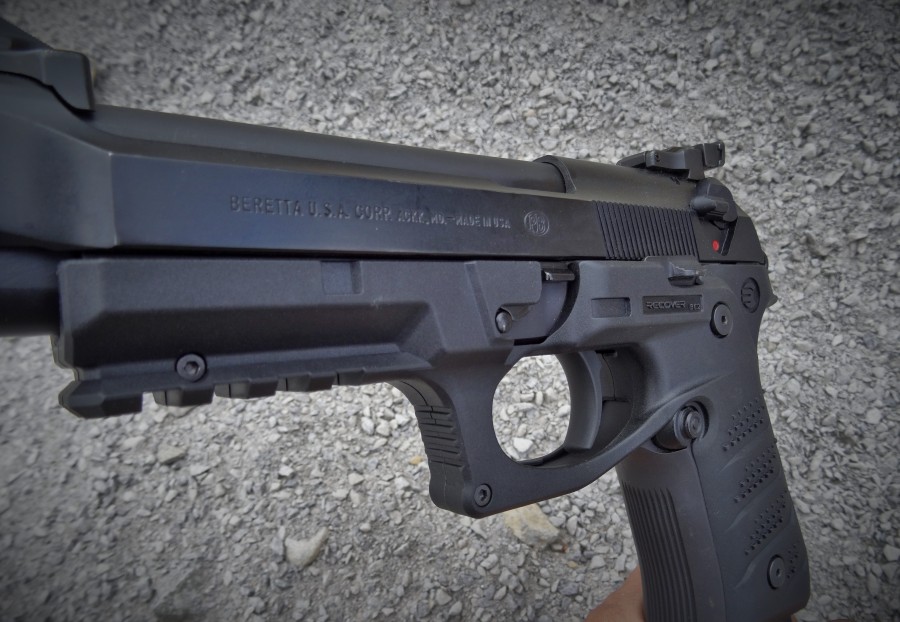
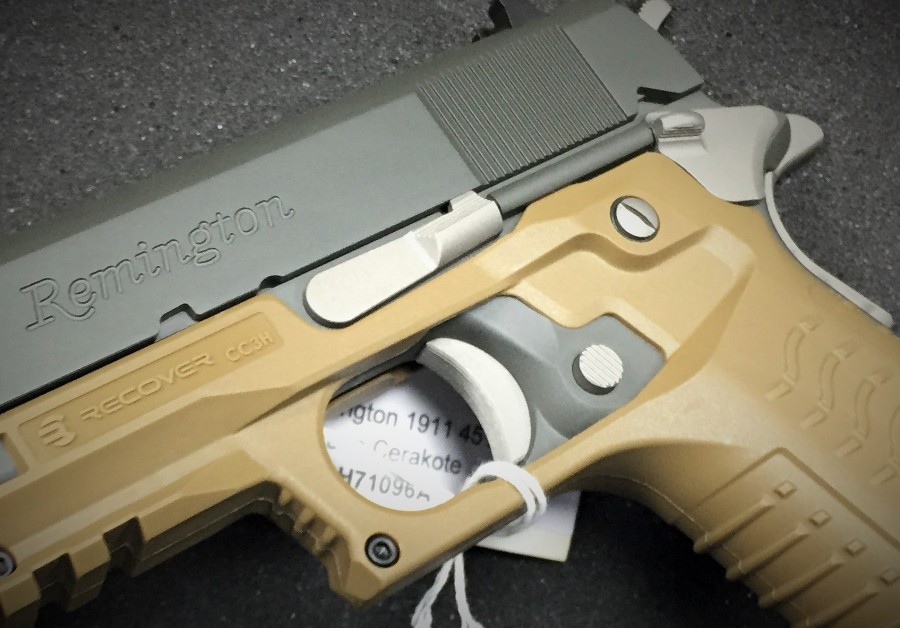
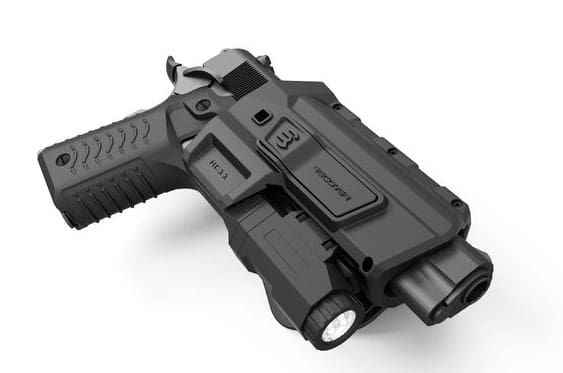

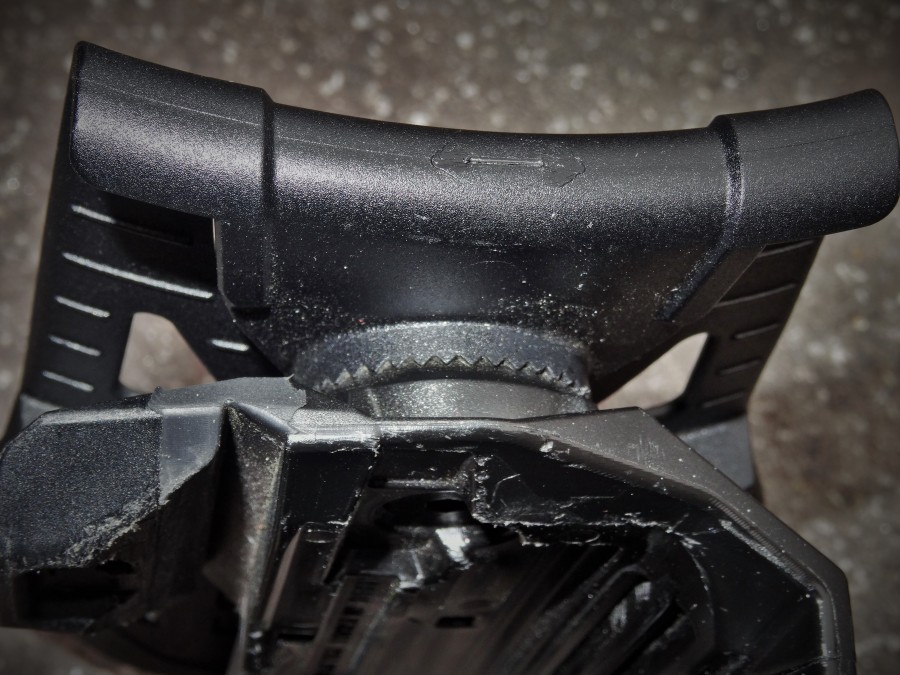
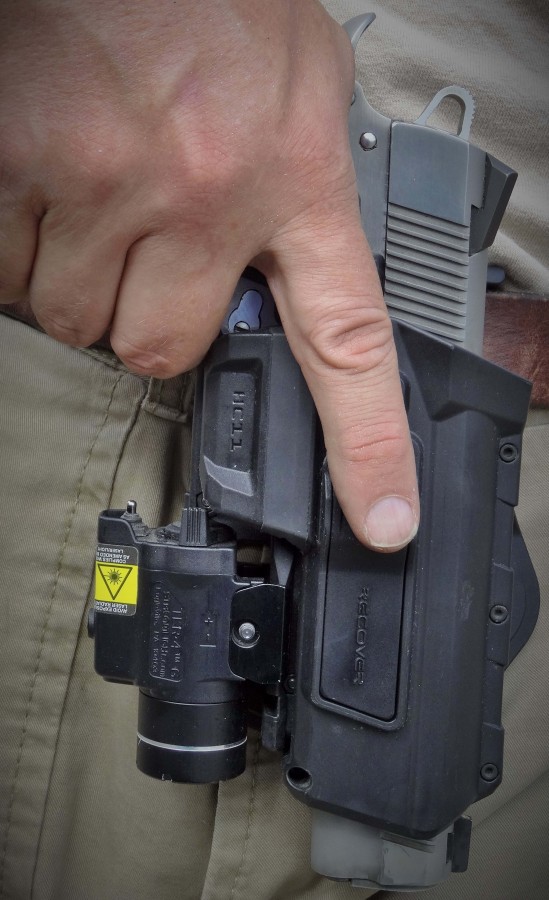
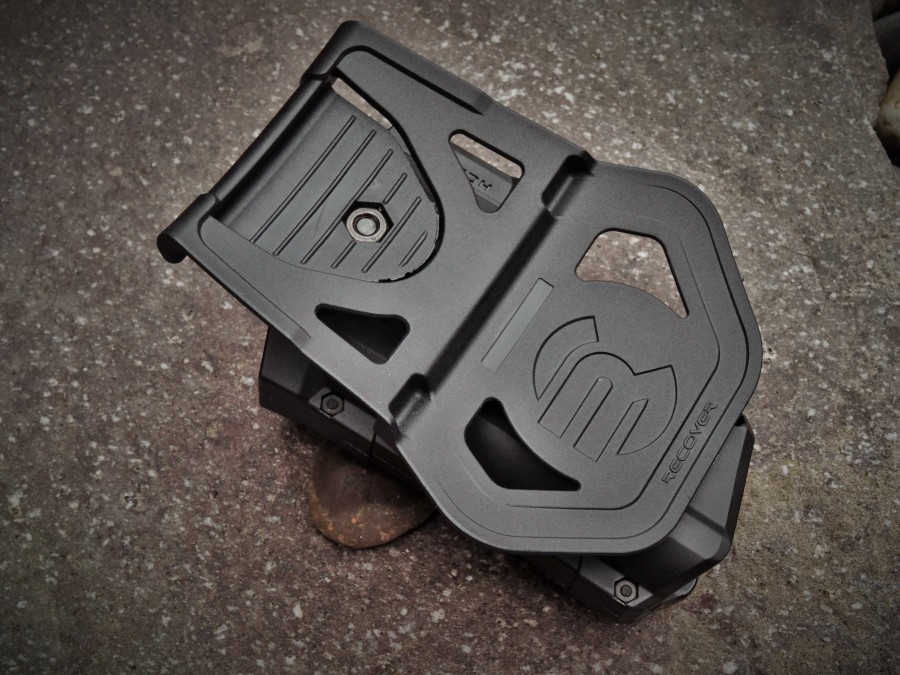
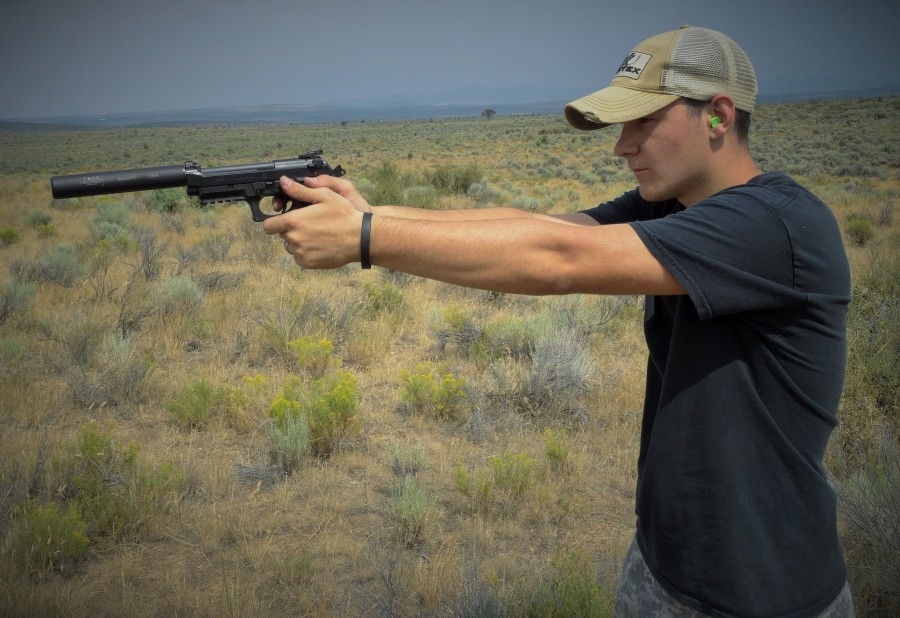
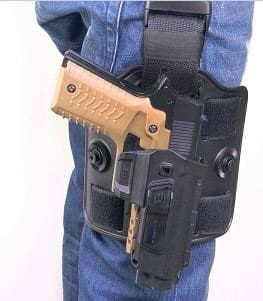
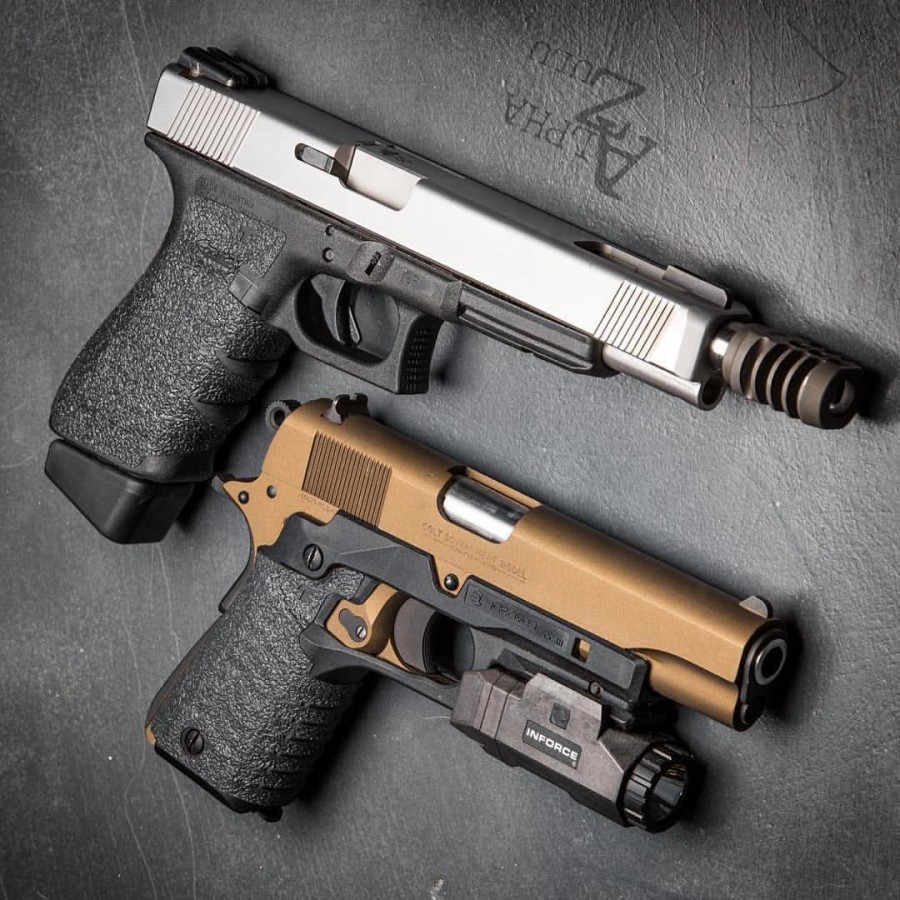
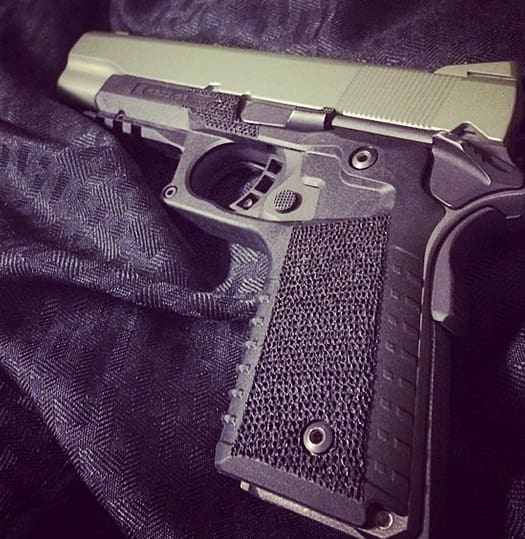
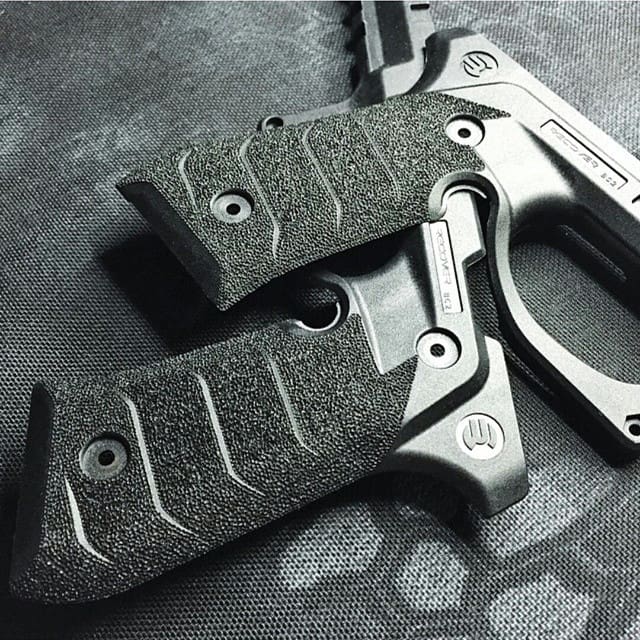



When I read Springfield Armory I thought you meant a real one for a second. I might have gagged a bit. Still looks like a solid design.
No, its a “modern’ SA. Still a nice gun for the money, but yeah, I hear ya. LOL.
Proof read, please…
Been looking at these for an 80% franken1911 that has a dust cover gap… I have tiny girl hands tho…
That first picture of stippling looks more like talon grips or a similar rubber overwrap.
Now that I took a second look, you might be right. Looks good, though, eh?
“guys with hands…”
Thanks, edit made. The “real” editors undoubtedly have their hands full with the Texas Firearms Festival this weekend.
So why didn’t they build the laser/light into it, Crimson Trace style?
“Or both”
That’s funny.
I like that they made holsters to work with this so the guns are still usable.
I contacted the company re the beretta holster and they basically said it was off the table..so its basically useless if you can’t get a holster to fit the gun after you put the recover on it.
when will you have a laser holster for a 92fs Beretta like the hc11.
Comments are closed.